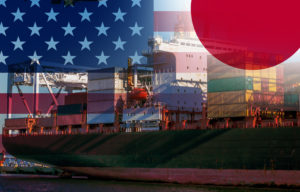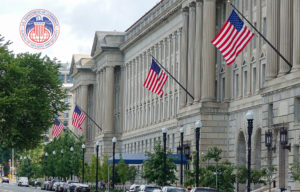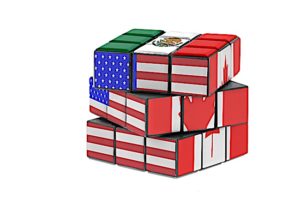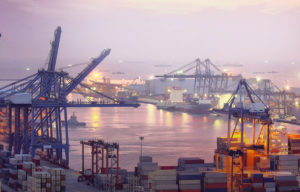News & Insights
Customs and Border Protection Begins Targeting Imported Goods Suspected of Being Made with North Korean Forced Labor
U.S. Customs and Border Protection (“CBP”) has recently begun scrutinizing import shipments suspected of being made with North Korean forced labor, as directed by the recently enacted Countering America’s Adversaries Through Sanctions Act (“CAATSA”). CAATSA gave expanded authority to CBP to enforce economic sanctions against North Korea and prevent the entry of goods made with North Korean forced labor into the United States. There have been many reports in the media as of late describing how many manufacturers in China and Russia are using North Korean workers to produce their goods, many of which are being exported to the United States. Based on a report by Military.com, it is estimated that approximately 200,000 North Korean slave labor is being used in over 45 countries around the world, and the North Korean government earns an estimated $3 billion annually for supplying slave labor to these countries. All of the wages of foreign workers are paid directly to the North Korean government (or through the companies that they control), and they in turn pay the workers. The average wage for a North Korean worker, payable to the North Korean government, is reportedly around $400 per month, and the workers actually receive 10-20% of that amount. The export of slave labor is in addition to the forced labor occurred in the numerous prison labor camps inside North Korea.1
What does this mean for U.S. importers? Quite simply, the CAATSA triggers the need for additional due diligence by U.S. importers and enhanced internal controls to ensure that their international supply chains are free from forced labor—especially with respect to forced labor involving North Korean citizens working outside of North Korea.
Hasn’t the United States always prohibited the importation of goods produced through forced labor or merchandise imported from North Korea? The answer is YES. First, by way of background, the Foreign Assets Control Regulations (31 C.F.R. Part 500 et seq), which are enforced by the Treasury Department’s Office of Foreign Assets Control (“OFAC”) prohibit virtually all dealings by U.S. persons with North Korea, and the U.S. Customs Regulations prohibit the importation of North Korean-originating goods—specifically, imported merchandise that contains any amount of North Korean content is prohibited from entering the United States. In addition, CBP has long had the authority to deny entry into the United States of merchandise produced, in whole or in part, by prison, forced, child or indentured labor under the Tariff Act of 1930 (19 U.S.C. Section 1307). The Trade Facilitation and Trade Enforcement Act (“TFTEA”), which was enacted in 2016, further solidified CBP’s enforcement authority in this area, allowing CBP to prohibit the entry of imported goods where there is evidence that they were produced by forced labor—but the burden was placed on CBP to prove that forced labor was in fact involved in the manufacture of imported goods.
CAATSA, however, changed the rules of the game. CBP will of course still deny entry to imported merchandise produced through forced labor, but the burden of proof now falls on the U.S. importers to show by clear and convincing evidence that North Korean forced labor was not used in the manufacture of their goods. If there is evidence of North Korean labor, CBP may deny entry, detain and seize the imported goods, subject the goods to forfeiture, assess civil penalties, and may refer the issue to Immigration and Customs Enforcement (ICE) Homeland Security Investigations (HSI) for a criminal investigation. U.S. importers caught up in a violation of CAATSA should also expect to have their future import shipments scrutinized to much a greater degree, such as through increased examinations and detentions, and they will likely suffer negative publicity as a result of the violations.
As noted above, CBP has begun scrutinizing shipments of imported goods suspected of having been produced with North Korean labor, and the focus appears to be on shipments from areas that border North Korea, such as northeastern China and the Vladivostok region in Russia. For example, CBP has already detained and seized several shipments from China, and has requested information and documentation from U.S. Importers through the issuance of CF-28s. The documents and records that may be requested by CBP as part of a CF-28 inquiry may include certificates of origin, supplier certifications stating that no forced labor was used, foreign supplier daily production records (including subcontractor production records), finishing and packing records, employee timecards and wage records, employee lists, purchase orders and delivery documents for raw materials, inputs and components used, inventory records, bills of material, commercial invoices, packing lists, proof of payment, factory visit reports and photographs, inline and final inspection reports, factory utility bills and payment, etc. At the same time, CBP is encouraging parties, who have information about the use of North Korean or forced labor with respect to imported merchandise, to submit information via its online eAllegation portal—parties who provide tips that lead to the recovery of a penalty, fine, or the forfeiture of violative merchandise may be eligible to receive compensation of up to $250,000.
To assist U.S. importers in their increased supply chain due diligence efforts, CBP published guidance in early November on its website recommending the adoption of additional internal controls for compliance, and updated its Reasonable Care Checklist. For example, CBP recommends that U.S. importers take affirmative steps to—
-Fully understand the sourcing, manufacturing and finishing processes for their imported goods, all of the companies involved, where exactly such operations are performed, and the labor conditions that exist in each of the production facilities;
-Review the information contained on CBP’s website relating to Forced Labor, such as fact sheets and recent investigations conducted by CBP;
-Review the U.S. Labor Department’s “List of Goods Produced by Child Labor or Forced Labor” and “Reducing Child Labor and Forced Labor Toolkit,” as well as the International Labor Organization’s (“ILO’s”) publication “Indicators of Forced Labour,” with respect to high-risk countries, high-risk commodities, and red flags;
-Perform regular risk assessments and internal audits of their supply chains to confirm that their imported goods are both “forced labor free” and “North Korea free”;
-Implement a formal, robust process for vetting foreign suppliers and vendors in high-risk areas, and incorporate prohibitions against the use of forced labor in purchase order terms and conditions, supplier agreements and codes of conduct;
-Implement a formal social corporate responsibility compliance program.
U.S. importers are urged to review the CAATSA requirements and the recommendations of CBP, the Labor Department and the ILO for enhanced internal controls and supply chain due diligence, enhance their written agreements with international supply chain partners (e.g., to include strict prohibitions against the use of forced labor, requirements for maintaining records substantiating that no forced labor is used in the production of goods sold to the U.S. company, agreement to submit to internal audits by the U.S. company, etc.), and expand their current internal audit processes to address potential forced labor issues.
If you have any questions pertaining to the CAATSA, CBP’s enforcement efforts, or international trade issues, please contact Melissa Proctor at Miller Proctor Law PLLC (melissa@millerproctorlaw.com).
News & Insights

U.S. and Japan Announce Early Trade Agreement Commitments
On September 25th, President Trump and Japanese Prime Minister Shinzō Abe announced that the United States and Japan have, as a result of early negotiations of a free trade agreement, reached consensus in the areas of market access for certain

BIS Adds 60 New Parties To The Entity List
Today, the Commerce Department’s Bureau of Industry and Security (BIS) amended the Export Administration Regulations (EAR) (15 C.F.R. Parts 730 – 774) by adding sixty (60) parties from China, France, Hong Kong, Indonesia, Malaysia, Oman, Pakistan, Russia, Switzerland and the


